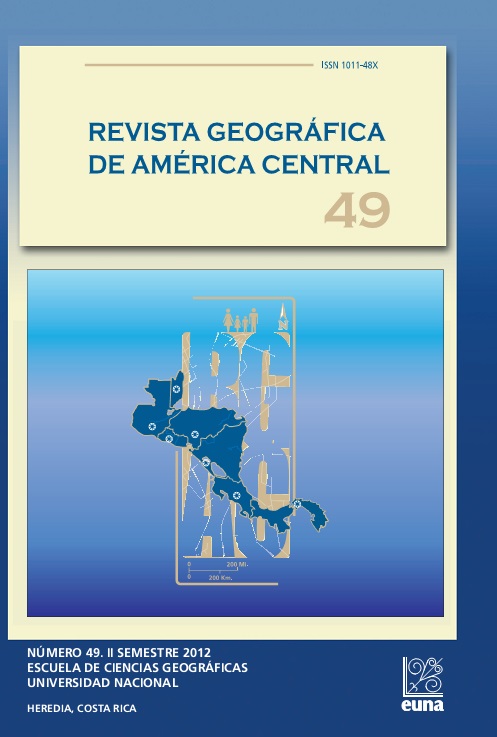THE SUSTAINABLE RURAL CITIES (SRC) PROJECT: THE CASE OF CHIAPAS, MEXICO
Keywords:
Sustainable Rural City (SRC), public policies, Nuevo San Juan de Grijalva, Santiago El Pinar, the state of Chiapas, MexicoAbstract
This paper addresses the issue of public policy in the creation of sustainable rural cities (SRCs) in the state of Chiapas, Mexico. This policy is examined in the context of two indigenous communities; Nuevo San Juan Grijalva and Santiago El Pinar from 2007 to 2010, a time of substantial change in both indigenous areas. The aim of this paper is to explain the consequences of public policy on rural cities, to do this, the analysis is divided into five sections; the first section describes conditions in indigenous communities in the state of Chiapas, Mexico. The second details economic vulnerability in indigenous communities; which requires a centralization of rural population policy in order to provide basic services. The next section examines the importance of the implementation of the SRC project. The fourth section describes the small town of Nuevo San Juan de Grijalva, which was destroyed by a natural disaster. The damage caused by the natural disaster acted as a catalyst for the SRC public policy implementation. The final section describes the case of Santiago El Pinar, a village that lacked even the most basic services but by the year 2010 had been transformed into a sustainable rural city. Among the issues raised are the following: the term sustainable rural city has been controversial since its introduction, particularly in connection with indigenous communities. Under the SRC model basic services are provided without allowing indigenous communities an opportunity to adapt to such radical change. The aforementioned policy is a landmark in solving the socio-economic, political and cultural issues that the indigenous communities in Chiapas face. However, it is essential to empower these communities by including them in the planning process and to take indigenous cultures into account.
References
Clavero, B. (2008). Geografía Jurídica de América Latina. Pueblos Indígenas entre constituciones mestizas. México, D.F.: Siglo veintiuno editores.
Crónica. (2010). Inicia la Construcción de la Segunda Ciudad Rural
en Chiapas. Recuperado de: http://www.cronica.com.mx/nota.
php?id_nota=485152
Limón, D. (2010).Consenso social en la construcción de la “Ciudad Rural de Santiago El Pinar”. Recuperado de: http://informadorchiapaneco.wordpress.com/2010/05/26/consenso-social-en-la-construccionde-la-%E2%80%9Cciudad-rural-santiago-el-pinar%E2%80%9D/
Diario de Chiapas. (2010). Avances Importantes en las Ciudades Rurales de Santiago El Pinar e Ixhuatán. Recuperado de: http://www.diariodechiapas.com/movil/index.php?option=com_content&view=article&id=7721:a
vances-importantes-en-las-ciudades-rurales-de-santiago-el-pinar-e-ixh
uatan&catid=2:principal&Itemid=3
Dorantes, M. (2009). Ciudades Rurales en Chiapas. Una mirada desde el derecho urbanístico. Provincia № 21. Recuperado de http://www.
saber.ula.ve/bitstream/123456789/28630/1/articulo4.pdf
Gobierno del Estado de Chiapas. (2010a). Administración 2006-2012. Recuperado de: www.chiapas.gob.mx
Gobierno del Estado de Chiapas. (2010b). Administración 2006-2012 (b). Recuperado de: http://www.cocoso.chiapas.gob.mx/documento.
php?id=20080408124618
Hinojosa, A. et al. (2011). El deslizamiento de la ladera de noviembre
y generación de una presa natural en el río Grijalva, Chiapas,
México. Boletín de la Sociedad Geológica Mexicana, 1Volumen 63, (Pág.15-38).
Honorable Congreso del Estado Libre y Soberano de Chiapas. (2008). Ley de Ciudades Rurales Sustentables para el estado de Chiapas. México.
Mariscal, Ángeles. (2007). Confirman la muerte de tres personas por el desgajamiento en Chiapas. Recuperado:
http://www.jornada.unam.mx/2007/11/07/index.php?section=sociedad&article=048n1soc
Mendoza-López et al. (2002). Citado en Hinojosa, A. et al (2011). Monitoreo de laderas con fines de evaluación y alertamiento: Cd. de México, Centro Nacional de Prevenciones de Desastres (CENAPRED).
Plano 1. Recuperado de: http://www.ciudadesrurales.chiapas.gob.mx/njgplanopdf.
Plano 2. Recuperado de: http://www.ciudadesrurales.chiapas.gob.mx/sp_plano pdf.
Organización de las Naciones Unidas (ONU) (2010). Informe Sobre la
Situación de los Pueblos Indígenas del Mundo. Recuperado:
http://www.un.org/esa/socdev/unpfi/documents/SOWIP_fac_sheets_
ES. pdf.
Organización de las Naciones Unidas (ONU). (2011). Mandato del Relator Especial Sobre el Derecho a la Alimentación, Misión México del
al 20 de junio de 2011 Ciudad de México, 20 de junio de 2011.
Oficina del Alto Comisionado para los Derechos Humanos. Recuperado
de: http://ceccam.org/sites/default/files/OLIVIER%20DE%20
SCHUTTER%20DECLARACION%20FINAL_2.pdf
Tolstoy, León, (1973). Resurrección. España.
Universidad Autónoma de Chiapas. (2008). Ciudades Rurales Sustentables Referentes para la Formulación del Plan Maestro. Recuperado de: http://www.unach.mx/images/documento_CEDESX3.pdf
Downloads
How to Cite
Issue
Section
License
Proposed policy for journals offering Open Access
Authors publishing their works in the Journal acknowledge and agree to the following terms:
a) Authors retain the copyrights to their works and guarantee the Journal the right to be the first to publish their works, under the Creative Commons License Attribution-NonCommercial-ShareAlike 4.0 International, CC BY-NC-SA 4.0 International (https://creativecommons.org/licenses/by-nc-sa/4.0/deed.es), which allows others to share works upon complying with the acknowledgment of authorship and mention of the Journal as the original publisher of the work.
b) Authors are permitted to separately establish additional agreements for the non-exclusive distribution of the official edition of the work published in the Journal (for example, authors may desire to place the work in an institutional repository or incorporate it into a book that is to published elsewhere) so long they acknowledgment to recognize the Journal as the original publisher. The aforementioned additional agreements must respect the terms of the non-profit character and sharing philosophy of the original license (CC BY-NC-SA 4.0 International, https://creativecommons.org/licenses/by-nc-sa/4.0/deed.es).
c) Authors are encouraged to archive the post-print or editor/PDF version in Open Access repositories.






 REVGEO is licensed under https://creativecommons.org/licenses/by-nc-sa/4.0/deed.es
REVGEO is licensed under https://creativecommons.org/licenses/by-nc-sa/4.0/deed.es
.svg_4.png)

_(1).png)
_(1)_(1)_(1)_1.png)
(2)(1)(1)(1).png)
